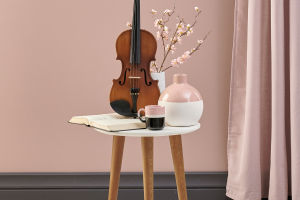Ceramic crafts are a timeless form of artistic expression that has captivated the human imagination for centuries.
From ancient civilizations to modern-day artisans, ceramics have held a special place in the world of art and craftsmanship. Let’s delve into the world of ceramic crafts, exploring their history, techniques, and the enduring appeal of this versatile medium.
A Brief History of Ceramic Crafts
Ceramics, as an art form, dates back thousands of years, with evidence of its existence found in archaeological sites from ancient civilizations like Mesopotamia, Egypt, and China. These early craftsmen created utilitarian objects such as pottery and clay figurines, which served both practical and ritualistic purposes.
Over time, the art of ceramics evolved, with different cultures developing their unique styles and techniques. For instance, Chinese porcelain, known for its exquisite blue and white designs, gained worldwide recognition and became highly sought after during the Ming and Qing dynasties. In Europe, the Renaissance period saw a resurgence of interest in classical pottery styles, and artists like Leonardo da Vinci and Michelangelo experimented with ceramics alongside their other artistic endeavors.
The Magic of Clay
At the heart of ceramic crafts is clay—a versatile, malleable material that transforms under the skilled hands of artisans. Ceramicists typically work with various types of clay, such as earthenware, stoneware, and porcelain, each offering distinct qualities and characteristics.
The process of creating ceramic pieces involves several stages, including:
Clay Preparation: The clay is kneaded and prepared to remove air bubbles and create a consistent texture.
Shaping: Artisans use various techniques like hand-building, wheel-throwing, or slip-casting to shape the clay into the desired form.
Drying: The shaped clay is allowed to air dry or be gently heated to remove moisture.
Bisque Firing: The dried piece is fired in a kiln at a relatively low temperature to harden it into bisque ware.
Glazing: Artists apply glazes, which are liquid coatings that add color and texture, to the bisque ware.
Final Firing: The glazed piece undergoes a final firing at higher temperatures to create a durable, finished product.
The final result is a piece of ceramic art that can range from functional tableware to intricate sculptures and decorative objects.
Versatility and Expression
Ceramic crafts offer endless possibilities for artistic expression. Artists can experiment with a wide range of forms, sizes, and surface treatments. The choice of glazes, the application of textures, and the firing process all contribute to the unique character of each piece.
Functional ceramics, such as plates, cups, and vases, seamlessly blend art with utility, making everyday objects more aesthetically pleasing. Meanwhile, ceramic sculptures and decorative pieces provide a canvas for artists to convey their emotions, stories, and messages through tactile and visual elements.
Challenges and Rewards
Working with ceramics can be both challenging and rewarding. The unpredictability of the firing process, where temperature fluctuations and chemical reactions can affect the outcome, adds an element of surprise to the craft. Artists must balance technical expertise with artistic intuition to achieve their desired results. However, the rewards are plentiful. The satisfaction of transforming raw clay into a beautiful, finished piece is immeasurable. Additionally, ceramics offer a therapeutic and meditative aspect to the creative process, as artists lose themselves in the tactile sensations of shaping and molding the clay.
The Timelessness of Ceramic Crafts
Ceramic crafts have stood the test of time, transcending generations and cultural boundaries. In a world where technology and trends constantly evolve, ceramics provide a connection to our shared human heritage. Whether it's a centuries-old Ming vase or a contemporary work of art, ceramics continue to captivate and inspire.
Ceramic crafts are a testament to the enduring power of art and craftsmanship. With a rich history, a wide range of techniques, and boundless opportunities for creative expression, ceramics remain a beloved and cherished form of artistic endeavor. Whether you're a seasoned artisan or an admirer of fine art, ceramics have something to offer everyone, reminding us that beauty and creativity are timeless.


